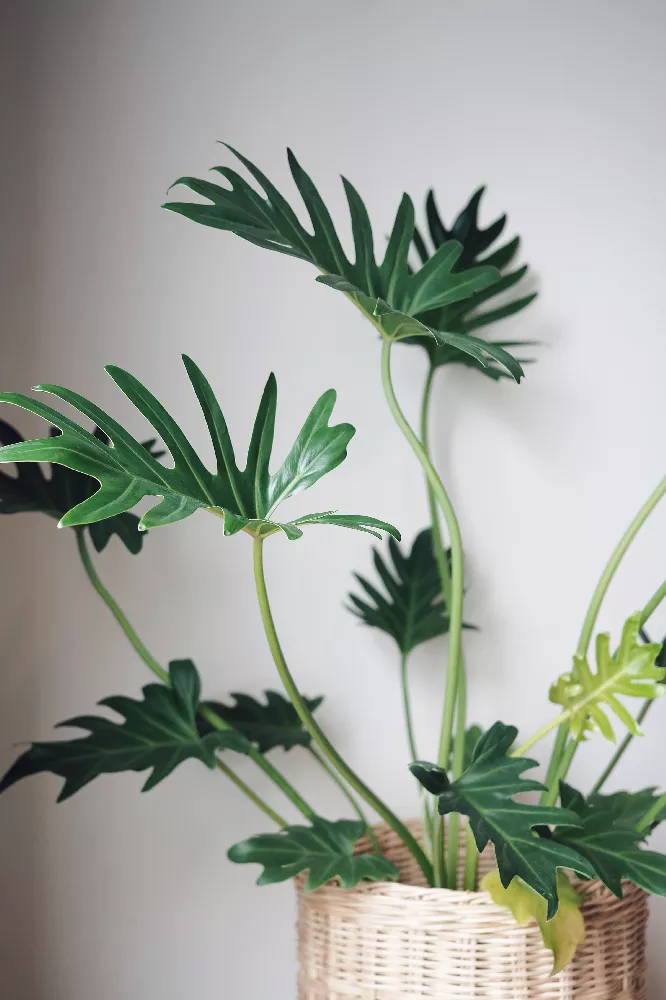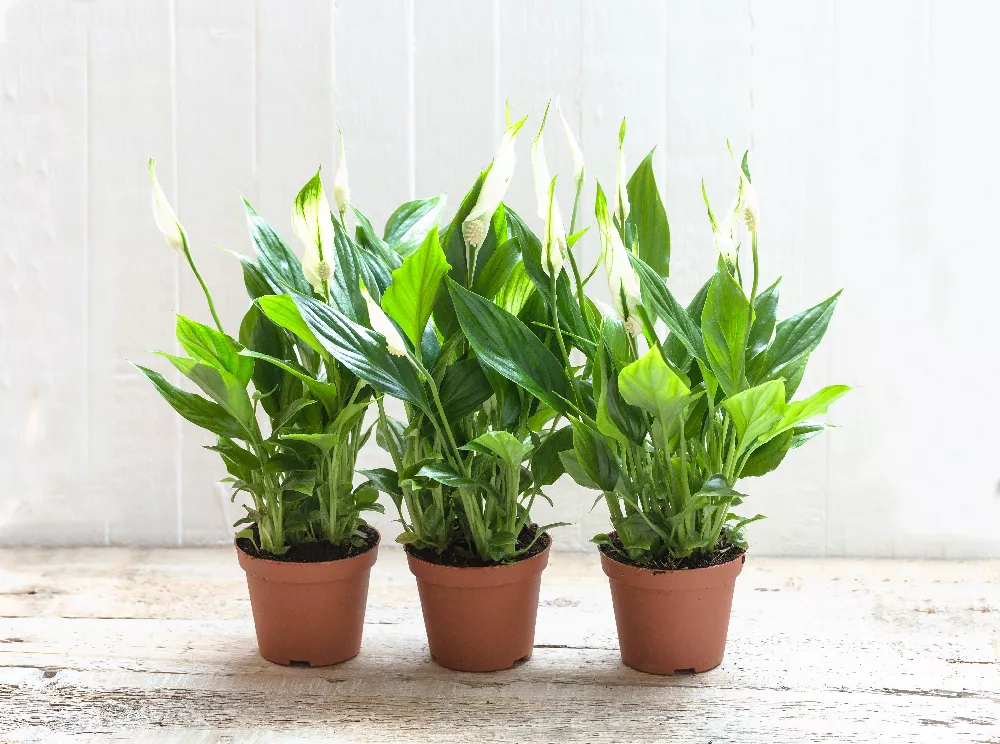- Home >
- Houseplants >
- Xanadu Philodendron ‘Winterbourn’ Plants
Xanadu Philodendron 'Winterbourn' Plants for Sale - Buying & Growing Guide
Xanadu philodendron or the ‘Winterbourn’ plant has a tropical pedigree that thrives indoors and in warm-weather landscapes. Unlike other varieties of philodendrons, they grow in clumps rather than climbing vines. Xanadu philodendron can reach a height of 2 to 4 feet with a width of 3 to 5 feet. This plant is easy to grow and increases in elegance as it ages. Here are some other facts about the xanadu philodendron:
- Its green leathery leaves can grow as large as 16 to 18 inches long and 7 to 14 inches.
- Grows best in medium, indirect light.
- Best grown in containers that are 2 to 3 inches larger than the root ball.
Enter your zip code to find nearby stores that may carry this plant.
Planting and Care
Planting instructions
Xanadu philodendron (philodendron xanadu) can be planted either indoors or outdoors, though it will not survive outdoors in cold climates or frost. This plant grows nicely outside in zones 10 and 11. Inside, xanadu philodendron prefers medium, indirect light and temperatures between 65 and 75 degrees Fahrenheit during daytime hours and 60 to 65 degrees Fahrenheit during the night.
Be careful with lighting. Too much light can result in bleached leaves, while too little light slows its growth and results in sparse foliage.
Xanadu philodendron is best planted in containers filled with loosely packed commercial houseplant potting mix or 100% sphagnum peat moss that gives their root balls the opportunity to grow and spread. Repotting should be done every one to two years when the plant’s root ball begins to show in its existing pot or when water pools on the soil’s surface. Plants that outgrow their initial containers should be moved into a pot that is 2 to 3 inches larger.
Watering and nutrients
Xanadu philodendron are native to Central and South America, and thrive in high-humidity environments, but they are equally comfortable in the humidity found in a typical home environment. Pebble trays or misting sprays will meet the plant’s moisture needs.
To water your xanadu philodendron, soak the soil allowing excess water to drain through the pot’s drainage holes. Don’t water again until the top 2 inches of the soil is dry. Too much water will lead to yellowing leaves, so don’t overdo it. When it comes to feeding your plant, fertilize it every two weeks during the spring, summer, and fall with a balanced fertilizer (10-10-10) at half-strength. If new leaf growth slows or the leaves do not reach the size of previous growth, you may need more fertilizer.
Pruning
Xanadu philodendron do not require pruning. Dead or damaged leaves are best removed by clipping them at the base of the stem, where it meets the main part of the plant. The best way to ensure that your plant keeps its desirable, bushy shape is to give it adequate light.
Pests, diseases, and animals
The Xanadu philodendron is vulnerable to certain fungi and pests. Certain fungi can cause leaf spot if left untreated and will lead to leaf drop. To address this problem, avoid overwatering and do not leave any water droplets on the leaves after watering. Fungicide will treat the problem as well.
Aphids, mealy bugs, and spider mites occasionally attack the Xanadu philodendron, particularly when they’re kept in dry-air conditions. Normal levels of humidity will generally prevent an infestation.
Light
The Xanadu philodendron has quite specific lighting requirements, which differ from most other Philodendron varieties. It needs more light than most of its relatives in order to maintain its compact appearance. If it does not get enough light, then the stems will become elongated in an attempt to search out a light source, they will take on a stretched appearance making the plant look leggy and unbalanced. If the plant starts to exhibit leaves that are growing with several inches of gap between them, then you will know you have to provide the plant with more light.
Too much light, though, will cause the leaves to become discolored, looking pale and unhealthy. While some yellow leaves are normal as the plant ages, a flush of yellow or bleached-looking leaves means the plant is getting too much light, and you will need to move it to a more sheltered position. It likes a good balance between the two, ideally receiving bright but indirect light. It will be happiest near a bright window in which the sunlight never fully shines in its direction.
Humidity
Like most Philodendrons, this plant likes humidity and would benefit from efforts to increase the moisture content of the air around it, such as pebble trays or water misting sprays. To make your own pebble tray, simply place a selection of pebbles on a tray and cover with water, then place your plant pot on top of the tray. As the water evaporates, it will create humidity around the plant. Increased humidity can also help keep spider mites at bay, as they will typically only infect a plant in very dry conditions.
You can also group this plant with other humidity loving plants, or use an electric humidifier to increase the moisture content of the air. However, it will grow just fine in average household humidity, though it does not like very dry air so it should be kept away from heating vents.
Temperature
This tropical plant enjoys daytime temperatures ranging between 65 and 75 degrees Fahrenheit, with overnight temperatures around 60 degrees Fahrenheit. This makes it ideal for growing as a houseplant indoors, but it can also be kept outside in warmer months and then brought inside when the temperature drops.
In milder climates, it is possible to keep the plant outside all year round, but if temperatures drop below 50 degrees Fahrenheit, the plant will not survive. Natively grown in Brazil and naturalized in other areas of South America, this plant is accustomed to warm weather and is not tolerant of low temperatures or frost.
Propagation
As a patented Philodendron variety, the Xanadu should not be propagated for sale as doing so would be illegal, though propagation for your own personal collection is within the law. This plant is propagated by division, which can be achieved easily when the plant becomes large enough that it needs to be divided. As a fairly fast-growing plant, you will soon find that the Xanadu becomes too large for its pot. At this point, you can either repot it into a larger pot, or you can divide it and create two or more smaller plants from the original plant. To do this, gently remove the plant from its pot, and then separate the root ball into sections.
You can try to gently tease the roots apart, but you will likely need to slice up the root ball as they become heavily entwined. Once you have separated the root clump, you can repot each newly created plant into appropriately sized pots and continue care as normal. Every time a Xanadu needs repotting, you can perform a division and grow your collection of this plant.
FAQs
Is the Xanadu philodendron poisonous?
Yes. Xanadu philodendron contains a compound called calcium oxalate that is activated when the leaves or stems are crushed. Reactions to chewing the leaves generally consist of drooling, pain, and swelling of the tongue, lips and mouth. These compounds can also cause skin irritation, so owners may want to don gloves prior to pruning or repotting. Though the Xanadu philodendron is a wonderful choice for a houseplant, care should be taken to keep pets and children away from it.
Is the Xanadu philodendron available in any other colors?
In addition to the standard dark green leaves, Xanadu philodendron is available in a variety called the Golden philodendron xanadu whose leaves appear in a variety of shades of green, as well as a bright golden yellow.
Does the Xanadu philodendron produce flowers?
The Xanadu philodendron will produce flowers when grown outdoors, but rarely when grown indoors. The flowers are dark red and are not considered ornamental.










